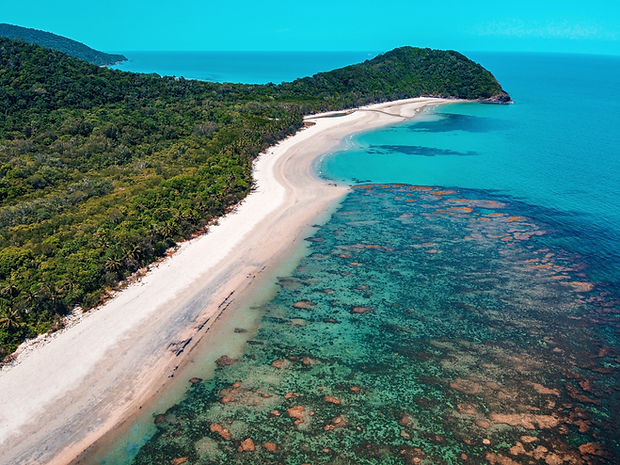
EARTH DAY.

EARTH DAY. HONOURING OUR CONNECTION WITH THE NATURAL WORLD
Every year on April 22nd, people around the world come together to celebrate Earth Day—an opportunity to reflect on our relationship with Nature and take action to protect our living planet. While Earth Day is just one day, the need to restore, respect, and reimagine how we care for the Earth is ongoing.
WHY EARTH DAY MATTERS
Earth Day began in 1970 as a collective response to environmental destruction. What started as a grassroots movement has grown into a global call to action, reminding us that we all have a role in shaping the future of our world. It is a day to celebrate Nature’s resilience, acknowledge the challenges we face, and recommit to restoration and regeneration.
At TreeSisters, we believe in a reciprocal relationship with Nature—one where we give back, not just take. Through tree planting, advocacy, and community-driven action, we are working to restore forests and empower people to live in deeper connection with the natural world.
EARTH DAY STATS
The way we care for Nature shapes our future. From deforestation to biodiversity loss, humanity's impact is undeniable—but so is our ability to restore, regenerate, and live in deeper reciprocity with the Earth.
18 million acres
of forest is lost annually to deforestation
That's equivalent to 27 football fields every minute. (Nature, 2015)
Forests can provide 30% of the solution
to climate change, but they receive less than 3% of climate funding. (The Nature Conservancy)
Over 75% of Earth's land areas have been significantly altered
by human activity, impacting forests, wetlands, and ecosystems. (UN)
Restoring 350 million hectares of forests by 2030 could remove up to 26 gigatonnes of CO₂
from the atmosphere. (Bonn Challenge)
One tree can absorb up to 48 pounds (22 kg) of CO₂ per year
helping fight climate change. (USDA)
Around 1 million species face extinction
largely due to habitat destruction from deforestation. (IPBES)

TAKE ACTION FOR NATURE
Protecting the Earth is not just about grand gestures—it’s about small, meaningful actions that ripple outward. Here are a few ways you can honour Earth Day and deepen your connection with Nature:
01
Reconnect with the land – Take time to step outside, breathe deeply, and observe the changes in the world around you. Whether it’s a walk in the woods or tending to a garden, nurturing this connection is a powerful act of restoration.
03
Support reforestation efforts – Trees are vital allies in the fight against climate change. By donating to organisations like TreeSisters, you directly support the restoration of forests and communities who care for them.
02
Reduce your footprint – Make choices that lessen your impact, from reducing waste and energy use to supporting sustainable businesses that prioritise regeneration over exploitation.
04
Advocate for change – Use your voice to support policies and initiatives that protect forests, biodiversity, and Indigenous land rights. Collective action creates real, lasting impact.
05
Share your love for Nature – Inspire others by sharing what moves you about the natural world. Whether through storytelling, art, or conversations, the more we celebrate our connection to Nature, the stronger our movement becomes.
EVERY DAY IS EARTH DAY
Our planet is alive with wonder, abundance, and the wisdom of ancient forests. As we mark Earth Day, let’s commit to living in reciprocity with Nature—not just today, but every day. Whether through small daily actions or larger commitments, each step we take brings us closer to a future where humanity and the Earth thrive together.
Join us in celebrating, restoring, and standing for the world we love.
EVERY DONATION DOUBLED THIS EARTH DAY
Starting Tuesday April 22nd until the 29th, every donation made through The Big Give will be DOUBLED for one week only!
That means every £1 or $1 you give will turn into two, meaning twice the impact for our incredible Earth but we need your support.
Together, we’ve already planted millions of trees - trees taking climate action, restoring rainforests, biodiversity and habitats, and creating essential wildlife corridors. However, our impact extends far beyond a tree count. We work with women and local communities at the grassroots level, focusing on holistic and ethical approaches to restore our planet. We are a community-driven organisation that challenges systemic power imbalances and ensures funding and decision-making are returned to local and Indigenous communities, empowering those most connected to the land.
TreeSisters is more than a charitable organisation—it’s a movement to give back and live more harmoniously with the Earth.

CASE STUDY: RESTORING ELEPHANT HABITAT IN KENYA
Nestled in the foothills of Mount Kenya, the Irangi Forest is a crucial water source, providing 40% of Kenya’s supply. Yet, with only 7% tree cover nationwide, deforestation threatens both communities and wildlife.
Our reforestation efforts are revitalising 105 hectares of land each year, restoring native forests and creating vital habitats for endangered species like the black rhinoceros, leopard, and African elephant. In Ruiri Beat, near the Upper Imenti Forest, tree planting is reversing environmental decline, ensuring water security and expanding feeding grounds for elephants and other wildlife.
Within the next decade, full restoration will allow these forests to flourish once more—bringing shade, water, and renewed life to the landscape.
This footage was captured in Ruiri Beat, located next to the Upper Imenti Forest project site in Kenya near an elephant breeding spot so many mother elephants and their young calves are often spotted here.
This restoration effort not only benefits the local ecosystem but also ensures a brighter future for the wildlife dependent on the forest's resources.






